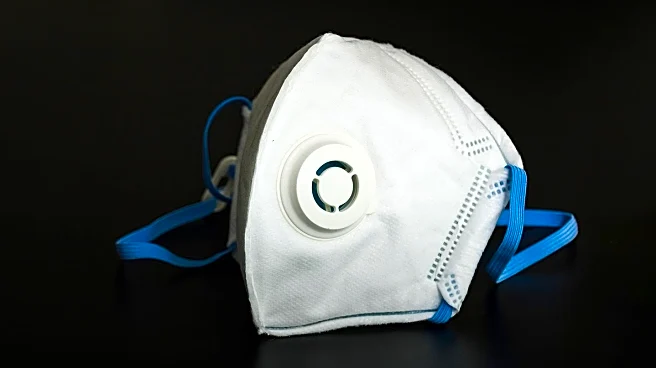What's Happening?
Recent research has identified azelastine, an over-the-counter nasal spray, as a potential tool in reducing the risk of contracting COVID-19 and other viruses. A phase 2 clinical trial published in JAMA involved 450 healthy volunteers in Germany, most of whom had received the COVID-19 vaccine. Participants were divided into two groups, with one using azelastine nasal spray and the other a placebo. Results showed that the azelastine group was three times less likely to contract COVID-19 compared to the placebo group. Additionally, azelastine users experienced shorter durations of illness and were less likely to contract other viruses, including the common cold.
Why It's Important?
The findings suggest that azelastine could serve as a complementary measure to existing COVID-19 prevention strategies, such as vaccination and mask-wearing. This could be particularly beneficial in high-risk settings or for individuals seeking additional protection. The study highlights azelastine's potential antiviral properties, which may extend to other viruses like RSV and influenza. However, experts caution that more research is needed to confirm its efficacy and recommend it as a preventive measure. The study underscores the ongoing search for effective tools to combat viral infections, which could have significant implications for public health strategies.
What's Next?
Further research is necessary to establish azelastine's effectiveness as a prophylactic measure against COVID-19 and other viruses. Experts suggest that while azelastine shows promise, it should not replace traditional prevention methods like vaccination. Compliance with frequent nasal spray use could be challenging, and its role may be more complementary than primary. Researchers may explore azelastine's use in specific high-risk scenarios, such as large gatherings, to provide additional protection. Continued studies will help determine its place in the broader context of viral prevention strategies.
Beyond the Headlines
The study raises questions about the accessibility and practicality of using azelastine as a regular preventive measure. While it offers potential benefits, the need for frequent application may limit its widespread use. Additionally, the cost and availability of azelastine could impact its adoption. Ethical considerations around promoting over-the-counter medications for viral prevention also warrant discussion. As research progresses, understanding the long-term implications of azelastine use will be crucial in shaping public health recommendations.











